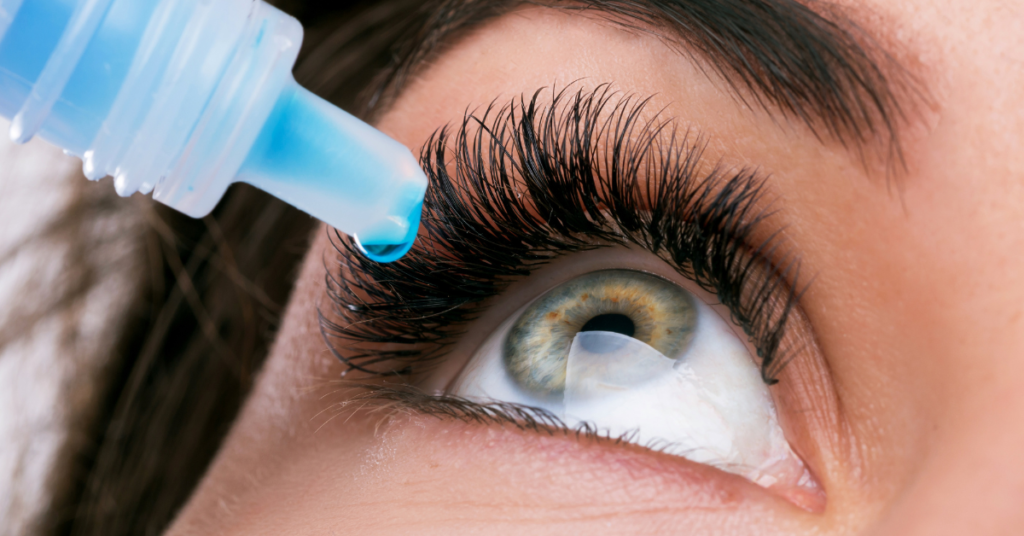Conjunctivitis red eye flu spread has been related to pediatric and adult coronavirus cases, according to research suggesting it may be a sign of previous versions of the virus.
Researchers looked at 216 kids between the ages of 2 and 11 in Wuhan, China, the site of the new coronavirus’s initial detection. While many symptomatic individuals exhibited typical coronavirus symptoms, including fevers and coughs, 22.7% of the children evaluated had “various ocular manifestations.” All of the children had tested positive for COVID-19. Prior research indicates that adult coronavirus patients experience pink eye flu spread or Conjunctivitis, but only at a much lower rate of 1% to 3%.
“Keep in mind that this study of red eye flu spread did not do a biopsy of the eye, even though the numbers do seem to be higher among children.”
Certain presumptions are being made here, such as the belief that the coronavirus caused pink eye flu in all COVID-19 patients who displayed ocular symptoms. Various viruses, bacteria, and colds can bring on Conjunctivitis. Without a saliva sample, we cannot verify that the coronavirus is the actual cause of the observed ocular symptoms.
“Although coronavirus could cause [pink eye], Conjunctivitis red eye spread is typically not COVID-19.“
What is this Red Eye Flu Infection?
“eye infection” refers to an eye illness caused by a microbe, fungus or virus. Conjunctivitis, or pink eye, is the most typical eye infection.

Viruses cause most pink eye flu-spread infections. However, bacteria can also cause pink eye flu. Antibiotics are not effective in treating viral infections. On bacterial infections only, do antibiotics function?
One or both eyes may get infected with red-eye flu. Certain infections are not dangerous. Almost any area of your eye might be affected when this virus attacks, and soon, it covers the whole eye and turns it pink. The infected person feels sticky liquid and pain in their eyes.
What are the Symptoms of Red Eye Infection or Conjunctivitis?

An infected eye flu spread in people may feel or look different from the norm. Early indications of an infection in the eyes could be:
- Irritability or burning.
- Bloodshot eyes.
- Eye discomfort.
- Moist eyes.
- Blowing up.
Possible complications of a red eye infection include:
- Discharge from your eyes (sticky, yellow pus).
- Discharge-caused eyelashes that won’t separate.
- Photophobia, or sensitivity to light.
- High temperature.
- Fuzzy eyesight.
Is This Red Eye Flu Spread Like Covid-19?
The most typical kind of eye infection is Conjunctivitis or pink eye. Every day, at least 200 new cases of Conjunctivitis are reported to us. A seasonal spike in conjunctivitis incidence typically accompanies the eye flu spread season. Both Red Eye Flu and COVID-19 disease have the same function as they spread from person to person.

What are the Causes of Eye Flu Infection Spread?
- Viruses, bacteria, fungi (plural of fungus), and parasites can all cause red-eye flu spread. There are numerous ways for these tiny organisms to get into your eyes, including cuts to the cornea.
- Sleeping with your contact lenses is one of the most common ways to get an eye infection. Infections of the eyes can also occur from improper lens cleaning.
- Both gram-positive and gram-negative bacteria can cause ocular infections. In a bacterial culture test, providers can identify gram-negative germs even though they are invisible in a Gram stain test. When a Gram stain test is performed, gram-positive bacteria become evident. The following are a few of the most typical bacterial sources of eye infections.

Type of Bacteria Which Causes Red Eye Flu Spread
- Aspergillus
- Mollusca spp
- E. coli bacteria family
- Influenza haemophilus
- The gonorrhea virus
- Aureus Staphylococcus (S. aureus)
- Aeruginosa pseudomonas (P. aeruginosa)
- pneumoniae, or Streptococcus pneumoniae
Which Viruses Typically Cause Infections in the Eyes?
- type 1 herpes simplex
- The zoster virus Varicella
- Adenovirus
Which Fungi Typically Cause Infections in the Eyes?
- Fungi from the Candida species account for over 66% of instances of endophthalmitis following corneal transplant surgery. A fungal infection could occur following cataract surgery.
Does Eye Contact Spread Eye Flu?
- The idea that eye flu spread can be transmitted simply by staring into someone’s eyes is prevalent. Still, this is only partially accurate. The primary way that pink eye flu, called Conjunctivitis, spreads is through direct contact with an infected person’s ocular discharge.
If you receive an eye injury from something outdoors, such as a stick or plant contaminated with Fusarium, you could acquire an infection in your eyes. Additionally, a fungal bloodstream infection might result in a red eye infection.
What is the Treatment of Pink Eye Infection?
The cause of your eye infection will determine how you treat it. It may consist of anti-infective pills, ointments, or eye drops. Antibacterial drugs typically take between one day and two days to start acting.
Although viral or allergy illnesses might not go away on their own, you might be able to feel better at ease using these natural remedies to control pink eye flu spread.

- Daily wash the eyes with water.
- Applying artificial tears or lubricating eye drops.
- Using painkillers available over-the-counter (OTC).
- Avoiding the allergens that first triggered the reaction.
- Apply wet, warm, or cold towels to relieve eye strain.
How to Control Red Flu Spread in Surroundings?
An infected person should wear black glasses so that a healthy person is not seen in his eyes. An infected person sits in the house until he is not cured correctly. Use rose water in the eyes. The person who feels his eyes turn red immediately checks with the eye specialist.
- Keeping your hands clean.
- Avoiding potential patients.
- Using eye protection whether you work or play sports.
- Apply wet, warm, or cold towels to relieve eye strain.
- Keep anything that contacts your eyes private, such as towels and makeup.
- If you become infected in your eyes, discard your cosmetics to prevent infection.
- Ensuring that you adhere to your contact lens usage, cleaning, and storage instructions.
- Preventing inflammation by taking allergy medication and avoiding allergens that irritate your eyes.
Which is the Best Eye Drops for Conjunctivitis (Red Eye Infection)?
Bacterial and allergic Conjunctivitis can be treated with antibiotics and allergy best eye drops for eye infections.
| Viroptic (trifluridine) | Polytrim (polymyxin B/trimethoprim) | (Ciloxan) ciprofloxacin | Ocuflox, or ofloxacin |
| Polymyxin B (Polysporin)/bacitracin | Ketotifen | Zotifen | Pataday |
| Olaparate | Cromoglycate disodium | ketotifen cetirizine | Nedocromil |
| Azelastine | lodoxamide | Epinephrine | Bupivacaine |
How to Use Eye Drops to Protect Red Eye Flu Spread?

Use eye drops to protect your eyes from infection, or if you have red eyes that spread everywhere do the following.
Follow These Steps:
- Use warm water and soap to give your hands a thorough wash.
- If you wear contact lenses, take them out unless your doctor tells you differently.
- Avoid contacting the dropper tip when removing the cap and shaking the eye drops.
- Lean back your head a little and raise your gaze.
- To create a pocket to place the liquid, gently pull the lower eyelid down with one finger.
- Without letting any part of the dropper come into contact with the eye, place it over the pocket under the eyelid.
- Squeeze the bottle gently to administer the appropriate amount of droplets.
- To allow the eye to absorb the drops, close the eye and gently press a finger into the corner of the eye adjacent to the nose for a few minutes.
- Remove any extra tears or droplets with a fresh tissue or cloth before opening the eye.
- If necessary, wait three to five minutes before administering other types of eye drops.
- Once the eye drops are applied, wash your hands once again.






